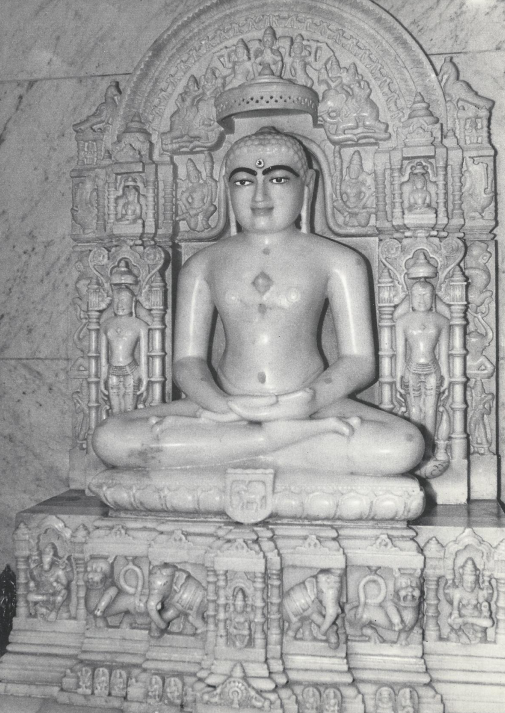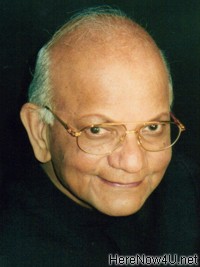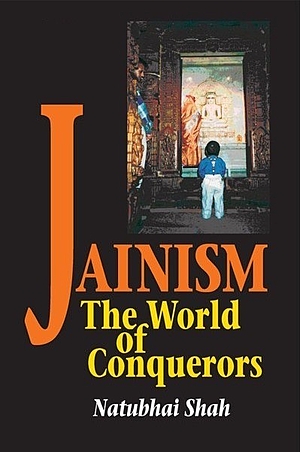In Jain tradition the twenty-four tirthankaras are born in each half of the cycle of time. We are currently in the regressive half-cycle (avasarpini), when it is steadily becoming more and more degenerative. Risabhdeva, the first tirthankara of the present half cycle, lived during the latter part of the third phase of this half-cycle, when life was on balance rather happier than unhappy. His successors, the other twenty-three tirthankaras, lived during the fourth phase when unhappiness prevailed but did not completely exclude happiness. The twenty-four tirthankaras and their iconographic symbols are set out in table 2.1.
Table 2.1 The twenty-four tirthankaras and their iconographic symbols

[Note: the suffix Nath(a) or swami meaning lord or protector is commonly added to many of these names.]
The succession was not continuous: there were long periods between one tirthankara's leaving the world and another's appearance to teach the faith to the people. The Jain scriptures relate the extraordinary attributes, dimensions and longevity of these teachers. We are on the verge of history, albeit still shadowy, with the twentieth tirthankara Munisuvrata, said to have been a contemporary of Rama, the hero of the great epic, the Ramayana, but who is also prominent in the Jain biographical literature, the Padmapuraana. Neminatha, the twenty-second, is described as a cousin of Lord Krishna who figures so prominently in the Mahabharata, and if Krishna is accepted as an historical figure, then we can probably argue that Neminatha was also historical. With Parsvanatha there is little doubt as to his historicity: according to the traditional dating he lived and preached in the eighth century BCE, 250 years before Mahavira and, of course, there can be no serious challenge to the historical existence of Mahavira. In this chapter we shall look briefly at the lives and teachings of the last two tirthankaras before Mahavira, Neminatha and Parsvanatha. The life of Mahavira, who was certainly not the founder of Jainism, though he can have some claim to be considered as the founder of the modern Jain faith, as we know it today, will be considered in the next chapter.
Plate 2.1
Image of Shantinatha at Jain Centre Leicester, England.
(Note the iconographic symbol of a deer)

It is well to be aware that scholars in comparison with the Brahmanical 'orthodoxy' have relatively neglected the non-Vedic (sramana) schools of thought. This is hardly surprising, given the numerical preponderance of adherents to Hinduism in the Indian sub-continent and the multiplicity of philosophical and religious traditions embraced within that indefinable term. The sramanic schools, represented particularly by Jainism and Buddhism, have tended to be regarded as a revolt against the orthodox Vedic tradition with its sacrifices and rituals, rather than as independent traditions. There has been little study of the lesser sramana currents of thought. Buddhism has certainly had its full share of attention but a great deal of its history has lain outside the geographical bounds of India, Jainism has produced over the centuries many distinguished scholars but until fairly recently the Jain tradition was introspective and little known outside a limited circle.
Neminatha
Neminatha (or Aristanemi) is referred to on four occasions in the Rigveda (vol 1: 1,14,89,6) as well as in the Samaveda. In the Yajurveda (Radhkrishnan 1929-31: vol. 1 pp 287) three tirthankaras are noted: Risabhdeva, Ajitanatha and Neminatha. Dharmananda Kosambi maintains that Angirasa Ghora who appears in the Candogya Upanishad was Neminatha (Bhagvati Sutra: 1, 1 quoted by Kalghatgi 1988: pp 55). Indeed the path to self-realization, which Angirasa Ghora taught to Krishna, bears a striking resemblance to the five great vows, which Mahavira was later to expound. Angirasa Ghora spoke of honesty, asceticism, charity, non-violence and truthfulness. In the Mahabharata Neminatha is described as teaching the way to liberation (moksa) to King Sagara (Mahabharata: Santi Parva 288, 5, 6). The dating of the different parts of the Mahabharata is very uncertain in spite of modern scholarship, and since moksa was a relatively late concept in orthodox Brahminical thought, this must represent an early example of sramanic teaching. The identification of Neminatha with a Scandinavian or Chinese deity, propounded by some, may be regarded as fanciful (Annuals, Bhandarkar Institute date n.a: Vol. 23 p. 122). Leaving aside Jain tradition, the evidence for the historical existence of Neminatha may be regarded unproven, though there is no reason to reject him as an historical figure, but the traditional accounts of his life are both interesting and inspiring.
Neminatha's birthplace is given as Shauripur (Uttaradhyayana Sutra: 22.3-4), near the modern city of Agra in Uttar Pradesh and at that time the capital of a small state where two princes ruled, Vasudeva and Samudravijaya; Krishna was the son of Vasudeva, and Neminatha was the son of Samudravijaya. Neminatha grew up as a handsome, dark complexioned, strong youth, endowed with unprecedented knowledge. Krishna loved and respected him. There are tales of his great strength even as a boy, his spinning of the great cakra, the discus, on the tip of his finger, or, also from the armoury, swinging with ease a mighty club. He could also blow the conch-shell bugle so loudly that it frightened the people of the whole town.
The story of Neminatha, as given in numerous Jain works, is seen as one of the most inspiring examples of non-violence (ahimsaa). When he was old enough Neminatha was betrothed to a beautiful princess, Rajamati, the daughter of King Ugrasena of Bhojakula. A great wedding feast was arranged and the sheep that were to be slaughtered and cooked for the meal were brought in and penned up ready for the butchers.
Neminatha set off in great style for the wedding, splendidly clothed and bejewelled, mounted on a magnificent elephant and surrounded by a huge escort and many musicians. On the way he saw the animals in their pens, frightened and miserable, bleating piteously. He asked what was the meaning of this and was told that these were to form the wedding meal for all those present. (Uttarapurana: 71.163, and Kalpa Sutra, 1971: p.251). Neminatha was touched with sadness at this news that the feast would be provided for the guests at the cost of the lives of all those innocent creatures, and that he himself, as the person for whom the celebration was to take place, must take responsibility for the slaughter. He ordered the sheep to be released and, profoundly affected by the incident, he decided to renounce the world and seek salvation as a homeless mendicant ascetic. Not surprisingly, his bride-to-be was very upset but after a period of grieving she realized the value of Neminatha's renunciation and she too followed his example and renounced the world.
After taking this decision, Neminatha discarded his jewels, gave them to a servant and left his possessions to be distributed to the poor. He left his hometown and, once more in a great procession, though different from his marriage, went to a park or garden called Revatika. There he gave up his princely clothes, plucked out his hair, and took the vow of renunciation. His cousin Krishna was full of admiration. (Uttaradhyana Sutra 25, 26, 27). It was after a period of fifty-four days and nights, indifferent to worldly things and deeply meditating, that he attained supreme knowledge, omniscience (kevala jnaana), on the day of the new moon, the first day of the bright half of the month of Asvin. Then he preached the way of salvation to a great assembly of people, and thousands of devotees including royalty, joined him and took the vow of renunciation.
Krishna especially celebrated Neminatha's achievement of omniscience with great dignity and splendour. Later on, Krishna's chief queen, Padmavati, also took the vow of renunciation and his other wives took lesser vows of self-restraint. Krishna went to Neminatha and asked him why he himself could not make up his mind to take the path of renunciation. 'O Krishna,' he replied, 'you are in the world and your services are needed by society so you cannot become a ascetic'. Nevertheless, he predicted from his omniscient knowledge that in a future age, Krishna's soul would be reborn as the eleventh tirthankara, in a city called Shatadvara, and his name will be Amama (Shah J 1990: 3.407, Jaini P. 1979: p.305). It is believed that at the time of the destruction of Krishna's capital city Dwaraka Neminatha was in southern India and after the death of Krishna, his kinsmen the Pandavas, who played a prominent role in the famous epic Mahabharata, realised the impermanent nature of things of the world and took the vows of renunciation. In their ascetic lives, they practised severe austerities and ultimately achieved liberation on the Satrunjay hill (Shah J 1990: 3.418-420). Their statues have been erected on Satrunjay Hill.
After his enlightenment, Neminatha travelled in Saurastra, central, sothern and northern India preaching the principles of non-violence (ahimsaa) and non-attachment to material things (aparigraha). In the course of time (after a phenomenally long life, according to the old traditions) Neminatha finally, on the eighth day of the bright half of the month of Asadha, passed away. As the Kalpa Sutra records, he passed beyond the bounds of karma, was uplifted after having left the world, cut asunder the ties of birth, old age and death, and became perfected and liberated; this occurred on Mount Girnar in Saurastra (Gujarat), a place of pilgrimage to this present day.
Parsvanatha
If the life of Neminatha lies on an uncertain boundary between legend and history, there is no reason to doubt the historical existence of Parsvanatha, the twenty-third tirthankara of the present age. As he is said to have lived some 250 years before Mahavira, taking the traditional dates of Mahavira's life would place Parsvanatha in the ninth to eighth centuries BCE. He preached a fourfold code of conduct involving non-violence, truthfulness, and abstinence from taking what is not given and, fourthly, non-attachment to material possessions. It is said that this fourfold code was enjoined by all the twentytwo tirthankaras after Risabhdeva, with only Risabhdeva and Mahavira including the fifth vow, chastity, among the great vows. Other sources, however, attribute the fivefold code to Mahavira alone. (It has been argued that chastity was simply implicit in the other four vows and did not need separate mention). The last sermon delivered by Mahavira (Uttaraadhyayana Sutra), has an interesting discussion between Kesi, a follower of the way of Parsvanatha, and Indrabhuti Gautam, the chief disciple of Mahavira, in which Gautam dispels the doubts of Kesi on the articles of faith, including the fivefold vows, which mark the way preached by the twenty-fourth tirthankara. There is a reference to the 'fourfold rule' in the Tripitaka, the Buddhist collection of scriptures. The Buddhist scholar, Dharmananda Kosambi states in 'Parsvanathaka Caturyama Dharma' that the Buddha accepted the practices of Parsvanatha tradition for some time (Kosambi date n.a: pp.28-31). Mrs Rys Davids in Gautama the Man (1928: pp.22-25) confirms that the Buddha adopted Jain practices of austerity in the early days of his search for the truth. The Jain tradition of non-violence, exemplified in the first rule of Parsvanatha's code of conduct, may have been the basis for the revulsion at the practice of sacrifices, which appears in the Upanishads.
Parsvanatha, the twenty-third tirthankara, was born in Varanasi (Benares) traditionally in 877 BCE and died at the age of 100. His father, Asvasena, was the ruler of the Kashi kingdom, of which Varanasi was the capital, and his mother was called Vamadevi. Needless to say, the sources describe Parsvanatha as handsome and strong, but much is made, however, of an incident showing his compassion. When he was out with his friends in the forest he saw an ascetic named Kamath who was enduring selfinflicted pain by exposing himself both to the blazing sun and to blazing fires. In one of the logs of wood, which the man was putting on the fire young Parsvanatha noticed two snakes and he implored the ascetic not to burn those living creatures. The ascetic had not seen the snakes and Parsvanatha had to get someone to split open the log to reveal them and set them free. The two snakes were severely burnt and in their dying moment Parsvanatha recited the Namokara Mantra to them, and because of this, the two snakes were reborn in their next lives as Dharanendra, King of the Nagas, the serpent deity, and Queen Padmavati. Kamath was reborn as a demon called Meghamali. The lives of these remained intertwined for, later, when Parsvanatha was an ascetic, the demon Meghamali assaulted him in various ways, and when the assault took the form of a fearful storm, Dharanendra protected him with a cobra hood above his head. This is why Parsvanatha's recognised symbol is a cobra and his images are depicted with a cobra hood.
It was seeing a picture of Neminatha, which is said to have directed the mind of Parsvanatha as a young man to renouncing the worldly life. Accounts differ as to whether he was married before he became an ascetic, the Digambar tradition makes no mention of it whilst according to the Svetambar he was married to the daughter of King Prasanjit, Prabhavati. At any rate, at the age of thirty he distributed his wealth and, to the rejoicing of crowds customary on these occasions, took his mendicant vows on the eleventh day of the bright half of the month of Maagha, on the outskirts of Varanasi. After some four months of severe austerities he attained omniscience (kevala jnaana), becoming an arhat, a kevali. Thereafter for seventy years he travelled preaching and gathering converts to the faith. He was well respected and many people of all classes came to greet him and to pay their regards. His followers were great in number and he organised them in the same way as Neminatha, before him, into the fourfold order. He had eight, or ten, principal disciples, and the first of these was Svayambhu. The leader of the female ascetics was Sulocana. Parsvanatha revived the teachings of the earlier tirthankaras and taught the shape and eternity of the world in the way, which was later to be shown by his successor Mahavira. He had great influence, not only in his own time but long after: his teachings were still followed two and a half centuries later when Mahavira was born. His emphasis on non-violence may well have been a cause of the discontinuance of the cruel Vedic sacrifices.
After seventy years as a wandering mendicant Parsvanatha's life on earth ended. Realising that final liberation (moksa) was at hand, he went with thirty-three ascetics to the mountain Sammeta Sikhara, in modern Bihar, and there, after a month of austerities, the last remaining karma destroyed, he achieved liberation from birth and death. The mountain where Parsvanatha attained moksa is still a place of pilgrimage.
 Dr. Natubhai Shah
Dr. Natubhai Shah
